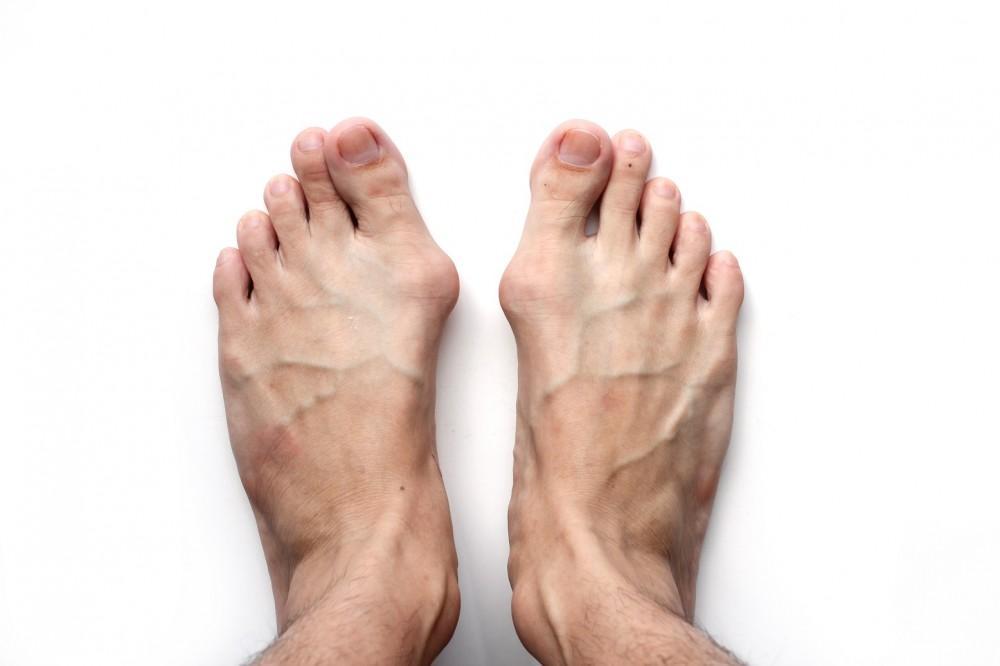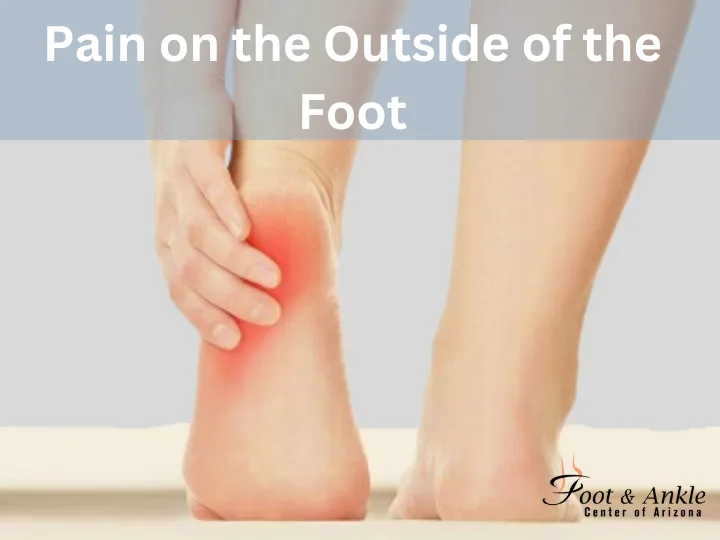Foot pain is a commonplace complaint that can affect humans of every age and activity age. One precise kind of foot pain is an ache at the outside of the foot, also called lateral foot pain. This soreness can be due to a variety of factors, starting from overuse accidents and structural abnormalities to particular scientific conditions. Understanding the potential reasons for this kind of pain can assist in looking for appropriate remedies and preventing complications.
Common Causes of Lateral Foot Pain
1. Stress Fractures
One of the most common reasons for aches on the outside of the foot is a pressure fracture. These are small cracks within the bone that result from repetitive pressure or overuse, frequently seen in athletes or individuals who engage in excessive-effect sports including jogging, basketball, or dancing. Stress fractures in the 5th metatarsal (the lengthy bone at the out of doors of the foot) are in particular not unusual. Symptoms include localized pain that worsens with the hobby and improves with rest, swelling, and sometimes bruising.
2. Peroneal Tendonitis
The peroneal tendons run alongside the outside of the ankle and foot, helping to stabilize the foot and ankle and facilitate motion. Overuse or repetitive sports can lead to infection of these tendons, a condition known as peroneal tendonitis. This circumstance is characterized by pain and swelling on the outer side of the foot, which can also get worse with pastime and improve with rest. In excessive instances, the tendons may become torn or ruptured, inflicting extra intense ache and instability.
3. Ankle Sprains
Ankle sprains are another common motive for lateral foot aches. When the ligaments that guide the ankle stretch past their limits or tear, it may result in a sprain. Inversion sprains, wherein the foot rolls inward, regularly affect the ligaments on the outdoor of the tank ekle. Symptoms consist of pain, swelling, bruising, and trouble taking walks or bearing weight on the affected foot. In a few cases, persistent instability can develop if the ligaments no longer heal nicely.
4. Cuboid Syndrome
Cuboid syndrome happens whilst the cuboid bone, placed within the center of the foot on the lateral side, becomes partly dislocated or subluxated. This condition often consequences from a surprising harm, inclusive of twisting the foot, or from repetitive strain. The foremost symptom is a sharp ache at the outdoor of the foot, which may expand to the feet. Other signs may consist of swelling, difficulty taking walks, and a feeling of a weak point inside the foot.
5. Arthritis
Arthritis can affect any joint inside the body, such as the foot. Osteoarthritis, rheumatoid arthritis, and gout are varieties of arthritis that can cause aches at the out of doors of the foot. Osteoarthritis is a degenerative joint sickness that results from put and tear, leading to the breakdown of cartilage. Rheumatoid arthritis is an autoimmune state of affairs that causes irritation inside the joints. A gout is a form of arthritis caused by the buildup of uric acid crystals within the joint. Symptoms of arthritis in the foot include aches, stiffness, swelling, and decreased variety of movement.
6. Bunions and Bunionettes
While bunions typically form on the inside of the foot at the base of the big toe, Bunionettes (also known as tailor’s bunions) form on the outside of the foot at the base of the little toe. Bunionettes can cause pain and swelling on the lateral side of the foot, particularly when wearing tight or narrow shoes. The condition results from the misalignment of the metatarsal bone and can be exacerbated by genetics, improper footwear, or abnormal foot mechanics.
7. Tarsal Coalition
Tarsal coalition is a congenital condition where two or more bones in the foot fuse together, restricting movement and causing pain. This condition often presents during adolescence but can be diagnosed later in life. The restricted motion can lead to pain on the outside of the foot, particularly during physical activity. Other symptoms include stiffness, flat feet, and frequent ankle sprains.
Diagnosing Lateral Foot Pain
Proper diagnosis of the underlying cause of lateral foot pain is crucial for effective treatment. A thorough clinical evaluation typically includes:
- Medical History: A detailed medical history to identify any previous injuries, medical conditions, or activities that could contribute to the pain.
- Physical Examination: A physical examination to assess the foot’s range of motion, strength, and areas of tenderness.
- Imaging Studies: Imaging studies such as X-rays, MRI, or CT scans to visualize bone and soft tissue structures and identify fractures, dislocations, or other abnormalities.
- Laboratory Tests: Laboratory tests may be ordered to diagnose conditions like gout or rheumatoid arthritis.
Treatment Options
The treatment for aches on the outside of the foot depends on the underlying cause. Some not-unusual remedy options encompass:
1. Rest and Activity Modification
For many reasons for lateral foot ache, resting the affected foot and warding off sports that exacerbate the pain can assist within the preliminary levels of recuperation. Gradual return to interest is suggested once symptoms improve.
2. Ice and Compression
Applying ice to the affected region can assist reduce aches and swelling. Compression with an elastic bandage can also assist the foot and decrease swelling.
3. Medications
Nonsteroidal anti-inflammatory capsules (NSAIDs) consisting of ibuprofen can assist reduce pain and infection. For arthritis-associated pain, specific medicinal drugs like corticosteroids or disorder-modifying antirheumatic drugs (DMARDs) can be prescribed.
4. Orthotic Devices
Custom orthotic gadgets, consisting of insoles or braces, can provide aid and alleviate strain in the affected vicinity. They can be particularly useful for situations like peroneal tendonitis, Bunionettes, or tarsal coalition.
5. Physical Therapy
Physical remedies can be useful resources in the recuperation procedure by strengthening the muscular tissues around the foot and ankle, enhancing the range of movement, and reducing aches. Exercises tailored to the particular condition can assist save you from destiny injuries.
6. Surgical Intervention
In some instances, surgical intervention can be important to accurate the underlying trouble. Surgery may be required for extreme strain fractures, large tendon tears, persistent Bunionettes, or tarsal coalition that does not reply to conservative remedies.
Prevention Strategies
Preventing pain in the outdoors of the foot entails a mixture of the right shoes, appropriate training techniques, and overall foot care. Here are some techniques to assist prevent lateral foot aches:
1. Wear Proper Footwear
Choosing shoes that provide adequate assistance, cushioning, and a proper suit is important. Avoid wearing shoes that are too tight, have excessive heels, or lack arch assist. For athletes, using recreation-unique footwear can assist save you from overuse accidents.
2. Gradual Increase in Activity
Gradually increasing the depth and duration of bodily activities can assist save you from overuse injuries like stress fractures and tendonitis. Incorporating relaxation days into schooling schedules allows the body to recover.
3. Strengthening and Flexibility Exercises
Regularly performing sporting activities to strengthen the muscle groups of the foot and ankle and enhance flexibility can assist in maintaining proper foot mechanics and decrease the risk of injury.
4. Avoiding High-Risk Activities
Being conscious of sports that position excessive pressure on the toes, together with jumping from heights or strolling on choppy surfaces, can help prevent traumatic injuries like ankle sprains.
5. Maintaining a Healthy Weight
Maintaining a healthy weight can reduce the stress positioned at the feet, reducing the hazard of growing situations like osteoarthritis and stress fractures.
When to See a Doctor
While some causes of lateral foot ache may be managed with domestic treatments and conservative treatments, it’s miles vital to search for medical interest if:
- The ache is extreme or persistent.
- There is vast swelling, bruising, or deformity.
- You are unable to endure weight on the affected foot.
- There are signs of infection, such as redness, warmth, or fever.
- Home remedies no longer improve the symptoms.
Early analysis and treatment can prevent in addition headaches and promote quicker recuperation.
Conclusion
At the Foot and Ankle Center of Arizona, positioned in Scottsdale, AZ, we concentrate on diagnosing and treating foot pain, which includes aches on the outside of the foot. With substantial enjoyment and expert know-how, our dedicated group is devoted to imparting top-tier care tailor-made to each affected person’s particular needs. Whether your ache is due to overuse, injury, or a particular clinical situation, we offer complete solutions that will help you discover comfort and regain mobility. Trust our skilled professionals to deliver powerful, compassionate care and guide you towards an ache-loose lifestyle. If you’re experiencing persistent or excessive lateral foot aches, don’t hesitate to seek our professional offerings for an accurate analysis and customized treatment plan. Your foot fitness is our priority, and we are here to help you every step of the way.




